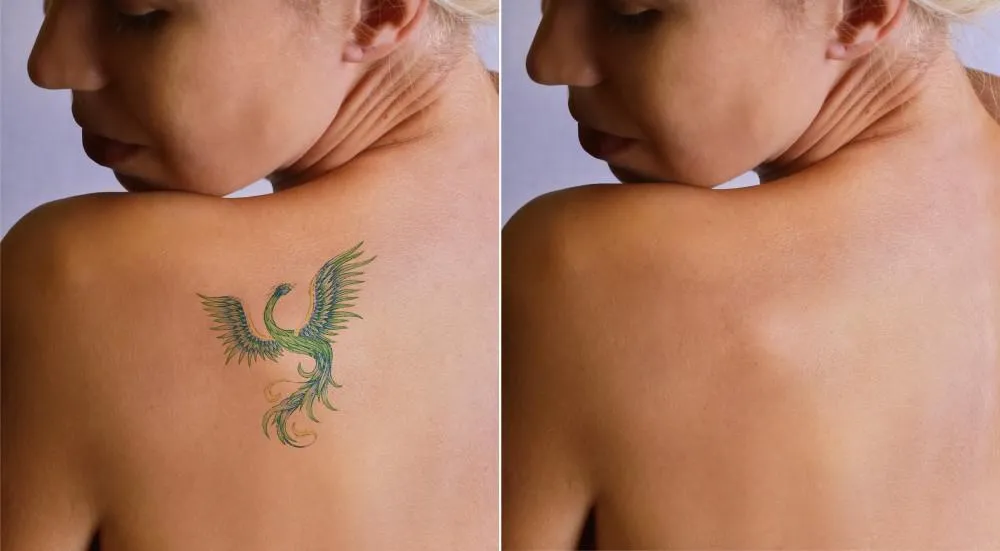- [email protected]
- 121-122, Santosh Nagar, New Sanganer Road, Jaipur, 302021
- Mon - Sun: 10:00 Am - 07:00 Pm
Laser Tattoo Removal

Laser tattoo removal is a common procedure used to remove unwanted tattoos. It uses laser technology to break down the tattoo ink particles in the skin, allowing the body's natural processes to gradually eliminate them. Laser tattoo removal can effectively lighten or completely remove tattoos, depending on various factors such as tattoo size, color, ink type, and individual response to treatment.
Here's a general overview of how laser tattoo removal is typically performed:
- Consultation: Before undergoing laser tattoo removal, you will have a consultation with a dermatologist or a laser specialist. During this consultation, your tattoo will be evaluated, and the treatment options will be discussed. The healthcare professional will assess factors such as the size, color, and location of the tattoo, as well as your skin type and overall health, to determine the most suitable laser treatment approach for you. They will also discuss the expected outcomes, number of sessions needed, and potential risks and complications.
- Preparation: On the day of the procedure, the tattooed area will be cleaned, and a topical numbing cream may be applied to minimize any discomfort during the treatment. Protective eyewear will be provided to shield your eyes from the laser light.
- Laser treatment: The healthcare professional will use a laser device that emits specific wavelengths of light to target the tattoo ink. The laser light is absorbed by the tattoo pigment, causing it to fragment into smaller particles. These fragmented ink particles are then gradually eliminated by the body's lymphatic system over time. Multiple laser sessions are typically required to achieve satisfactory results, with each session targeting different layers and colors of the tattoo.
- Cooling and protection: Laser devices often incorporate cooling mechanisms to minimize discomfort and protect the surrounding skin during the procedure.
- Post-treatment care: After the laser treatment, you may experience redness, swelling, blistering, or scabbing in the treated area. The healthcare professional may apply a topical antibiotic ointment and provide specific post-treatment instructions, such as avoiding sun exposure, using sunscreen, and avoiding certain skincare products or activities that may irritate the treated area.



The number of laser tattoo removal sessions needed varies depending on factors such as tattoo size, color, ink type, and individual response to treatment. Typically, several sessions spaced several weeks apart are necessary to achieve significant tattoo fading or complete removal. It's important to note that laser tattoo removal results may vary, and complete removal of a tattoo may not always be possible. Some colors of tattoo ink, such as green and blue, may be more challenging to remove than others. Additionally, certain tattoos may require more sessions for satisfactory results. Laser tattoo removal is generally considered safe when performed by a qualified professional. However, there are risks involved, such as skin discoloration, scarring, or infection. It is essential to follow the post-treatment instructions provided by your healthcare professional and promptly report any concerns or adverse reactions. If you're considering laser tattoo removal, it is advisable to consult with a dermatologist or laser specialist who has experience in this procedure. They can assess your tattoo, discuss your specific case, and provide personalized advice and treatment recommendations.
